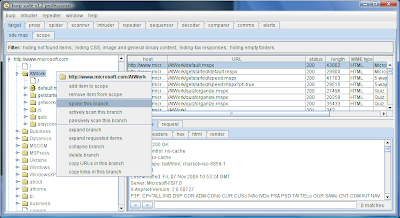 Dastardly, from Burp Suite
Free, lightweight web application security scanning for CI/CD.
View all product editions
Dastardly, from Burp Suite
Free, lightweight web application security scanning for CI/CD.
View all product editions
 Dastardly, from Burp Suite
Free, lightweight web application security scanning for CI/CD.
View all product editions
Dastardly, from Burp Suite
Free, lightweight web application security scanning for CI/CD.
View all product editions
In its current incarnation, the Spider is the weakest of the core Burp tools, with more than its fair share of old buggy code, and several obstacles to usability. I don't use it much myself, and I doubt if too many of you do either.
In the new release, Spider has been completely rewritten from scratch, with much improved content parsing and several new features. Spidering is now driven entirely via the target site map and other tools.
When you first map out a new application's content and functionality, it is generally best to work manually with your browser, giving you full control over the requests that are issued, and ensuring that you comply with any input validation, navigational structure and other constraints imposed on normal usage of the application. As you do this, Burp will passively compile its site map of all the items you have requested, as well as those which it has inferred from the application's responses.
When you have explored all of the content you can find with your browser, you will typically see a site map containing a number of unrequested items - these are shown in grey in the tree and table. At this point, you can still proceed manually, copying the relevant URLs into your browser and exploring further. Or you can let the Spider do its work to map out the rest of the application's content. The easiest way to do this is to select one or more nodes within the tree, and choose "spider from here" from the context menu:

When you tell Burp to spider a branch of the site map, it will perform the following actions: